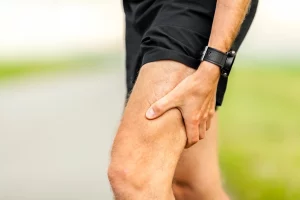In this week’s video blog, chartered physiotherapist David Fitzgerald explains the various causes, symptoms and possible therapies for low back pain.
The question Dublin Physiotherapy have to deal with most frequently, David says, is “what causes back pain?”. Most people, in fact, are looking for a more detailed answer, which should explain to them why they’re feeling pain in that area and what are the possible causes that led to it. It’s not enough, in fact, simply being diagnosed with “low back pain” as this is such a generic statement that doesn’t really mean much. From a clinical point of view, the first thing is to identify what structures are causing problems in order to identify the source of pain and decide what the most appropriate treatments are.
The generality of low back pain makes it particularly difficult for researchers to identify the source of pain as the only information the patient can give is what areas are sore and with what intensity.
David tries to class different types of lower back pain in different groups and, despite it being a very difficult task, he’s confident that this could help many patients in better understanding what’s causing them pain and what’s the right treatment for them.
Muscle Strain
The first thing people think is that their pain is being caused by a muscle strain, however, according to David’s experience, muscle strain is not very common and, even if it does occur, it usually causes very “short-lived” discomfort which shouldn’t last for more than a couple of days. So, the first hypothesis that lower back pain could be caused by muscle strain is already falling apart; in the event of a muscular issue the patient will very unlikely suffer from long-lasting debilitating discomfort.
Inflamed ligaments
The next point discussed by David in the video is ligaments. This is something that is not usually related to low back pain but, as he says, “just like every other joint in the body” ligaments can be strained from twisting or pulling, causing irritation and potential pain. When it comes to back joints, these can be a potentially dangerous cause of pain. As David explains, in fact, each vertebra has two little joints on each side, called facet joints, and a capsule around it which works like a machinery ligamentous structure that can cause pain about an inch off to the side of the spine.
Disc pain
The next structure that can cause pain in your low back is the disc, considered the central shock-absorber located in the middle of the spine. Many people are familiar with this term or have at least encountered it once, however not everyone knows what are the problems that can be caused by a disc inflammation. The nerve roots that are part of the spinal cord pass very close to the disc, coming off from both sides of the spine, terminating in our arms and legs. Problems to the disc can in fact be more dangerous than what people think and that is why this is a far more accurate hypothesis when it comes to diagnosing a patient with lower back pain.
Very often, in fact, low back pain is trivialized by the patients as something simple, like a muscle strain, however the true cause of the problem is rarely so simple. Among the problems caused by disc bulging or disc prolapse we find nerve compression, which can lead to full-blown sciatica.
How to identify the source of pain
This is mainly why it’s so important for specialists to identify what is causing the pain first and then move onto the suitable therapy for the problem. The next thing that a specialist should identify is where on the scale of severity the patient is, from mild, to moderate to severe. If the pain felt is considered severe, then the possibilities of things causing the problem are usually non-mechanical things and, it’s fundamental to establish if there has been a trauma to the spine, a bone injury or structural damage in one of the joints or bones.
An MRI scan is the first step to identify the source of pain and it can be potentially followed by a surgical referral to a specialist surgeon.
Once the problem is clear, then there are two different routes available; the patient can either need an operation to fix a structural damage or they must choose the special care of a therapist who can help alleviate the pain. Dublin Physiotherapy is one of Ireland’s clinincs offering expert treatment for people who suffer from such problems as low back pain.
A good thing to consider is the frequency of the pain. If the patient has been bending over for a long period of time or sitting in the same position (for instance after a long drive), the disc will start irritating and, as this irritation gets worse, there is more and more pressure on it and on the surrounding nerves. Because of this, there can be an occasional bulging of the disc. Being this a one-off event, however, an MRI scan wouldn’t be able to detect any problem as, in fact, the patient doesn’t suffer from bulging disc but has suffered from one episode, possibly caused by keeping the same position for too long and eventually putting too much pressure on it.
This is only one of the many examples that David gives in the video to explain the variety of low back pain sources and, if you’re interested in knowing more about them or about how to prevent it, then you should definitely give the video a look!




